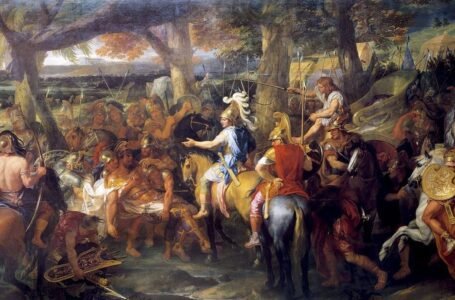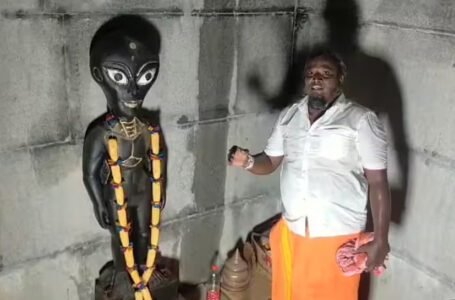The Greatness of The Markandeya Purana: Ancient Hindu Text on Creation and Dharma
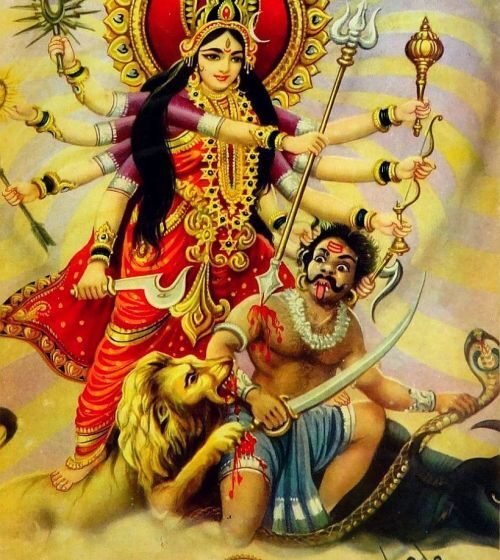
Out of the eighteen mahapuranas, Markandeya Purana is one that also holds significance to people that see shiva as their supreme deity. This Purana is also important to the worshipers of Durga because it includes the Devi Mahatmya. But some people say that the Markandeya text is one of the Puranas that lacks a proper divided presentation of ideas in Favor of any particular God. Said to be one of the oldest Puranas, it still continues to hold relevance for a lot of people and academics. The Markandeya Purana’s enduring influence on literature, culture and religion is a testament to its legacy. As a document that unites the ancient and the modern, it also inspires its followers and seekers and is an important source of wisdom and spiritual guidance.
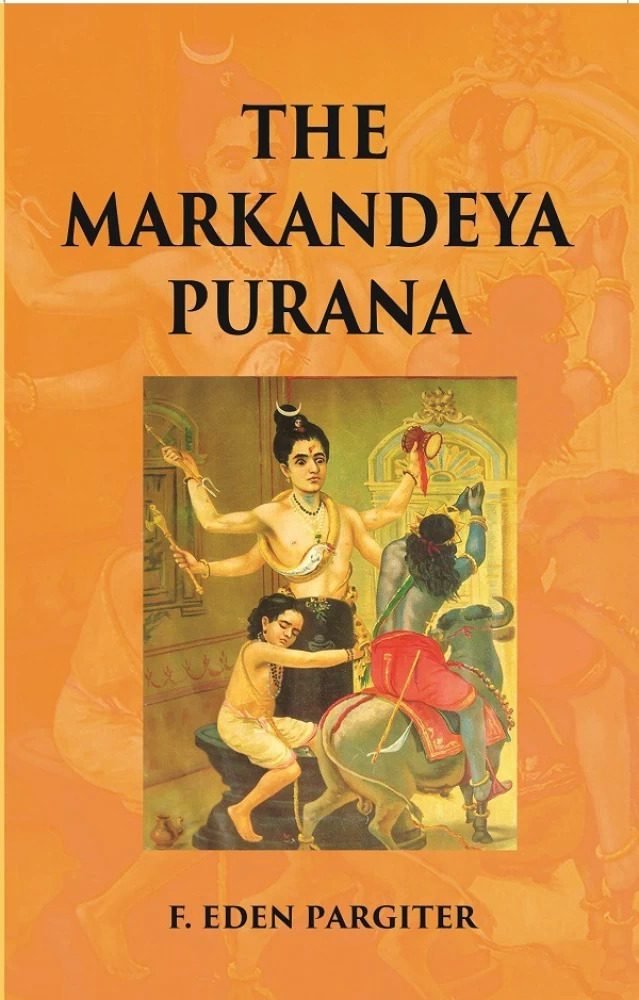
History
The text is named after sage Markandeya who is the son of the sage Mrikanda and his wife Manasvini. Markandeya was born into the Bhrigu Rishi clan. He is an ancient sage and one of the eight immortal beings, or Chiranjeevi’s, in Hindu mythology. Markandeya’s parents were given a choice and had to choose between a long-living son without virtue, or a virtuous son with a short life. They chose the latter, and as a result Markandeya was condemned to die at the age of sixteen. When Yama, the god of death, came to take his soul, Markandeya took held onto the Shiva Linga and sought refuge with the Lord. Lord Shiva, angry at Yama for trying to take away the lives of his devotee, appeared from the lingam, defeated Yama, and granted immortality to Markandeya.
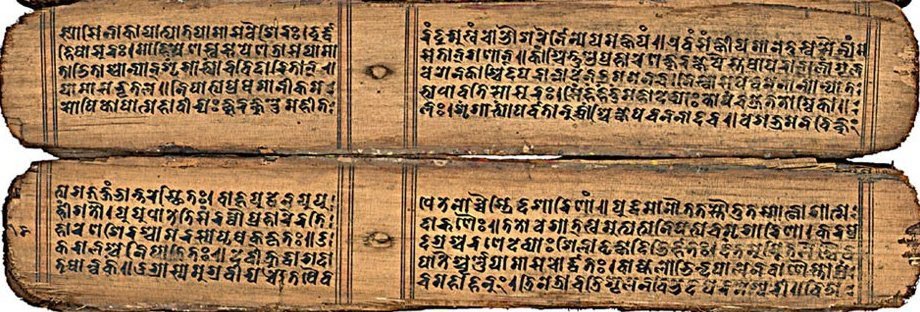
This Purana is said to be one of the oldest composed Puranas. The starting few chapters seem to have followed the style of writing that was seen in the Mahabharata epic. This makes certain academics believe that this text was essentially composed following the time of composition of Mahabharata. Wendy Doniger opined that the text was written in 250 ce and Devi Mahatmya was an exception composed in 550 ce instead. While some say its composition dates back to the third century some are of the view that it was actually composed in the 11th century like a lot of the other texts similar to this one. It is still not easy to come up with one concise date to point the composition of Markandeya Purana at. There are said to be 3 printed editions of this. The Calcutta version ends abruptly in Chapter 136, leaving Dama half-way. The Bombay and Pune editions have a full account of Dama and end in Chapter 137.
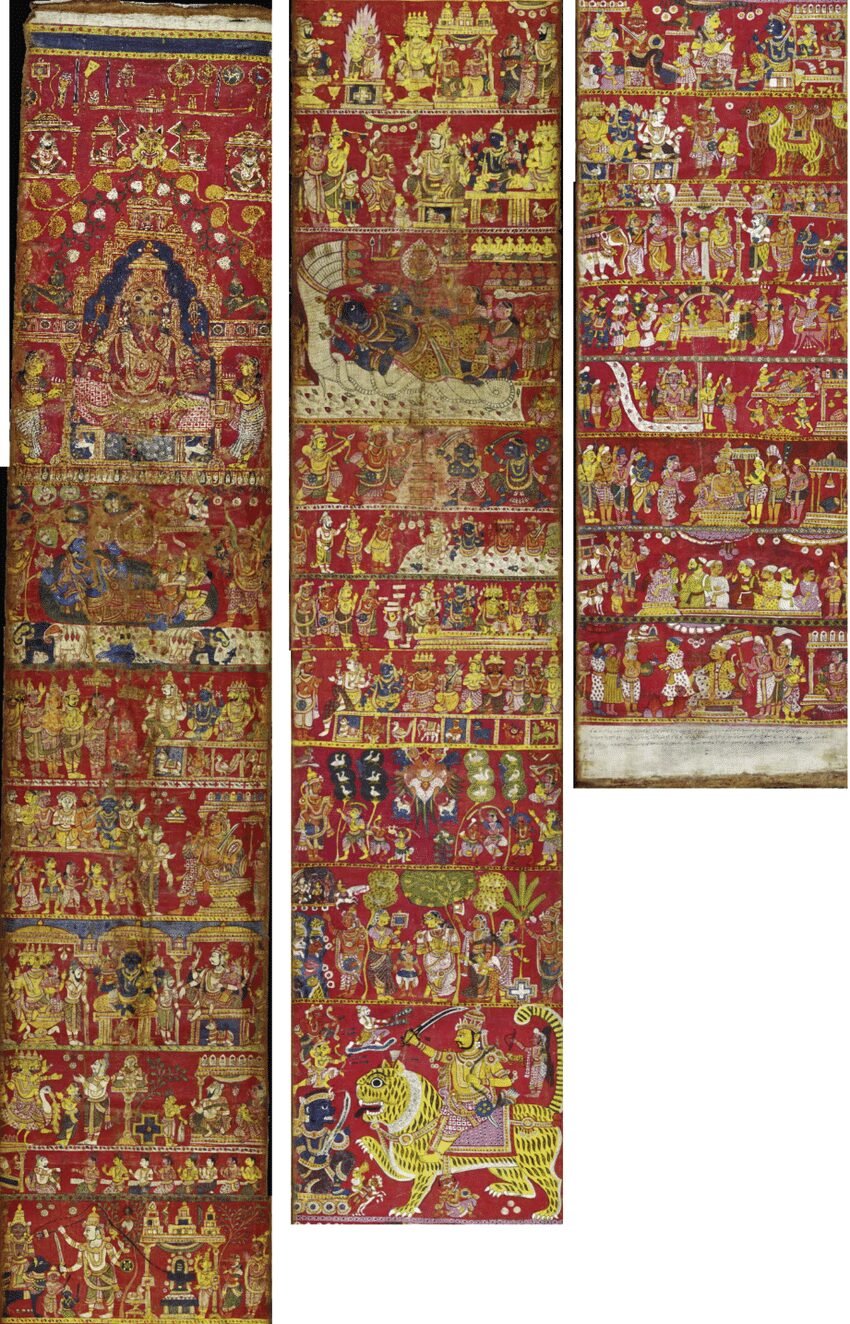
Mythology
Story of king Harishchandra
Harishchandra was an exemplary king known for his devotion to truth and justice. Once, sage Vishwamitra came to the king to test his loyalty and asked for a donation. Harishchandra kept his promise and promised the saint everything he had, including his kingdom. Harishchandra, his wife Shaivya and his son Rohitashva, who were now left with nothing, had to endure great hardships.
In sudden and immense poverty, Harishchandra sold his wife and son into slavery and worked as a crematorium worker to pay off his debts. Despite facing great hardships, he never deviated from the path of truth and continued to practice his profession honourably with utmost truth. When his son Rohitashva passed away and when his wife took his body to the cremation ground where the past king used to work, Harishchandra dutifully asked his wife for appropriate funeral fees. Impressed by his unwavering truthfulness, the gods appeared along with sage Vishwamitra and reestablished his kingdom and family.
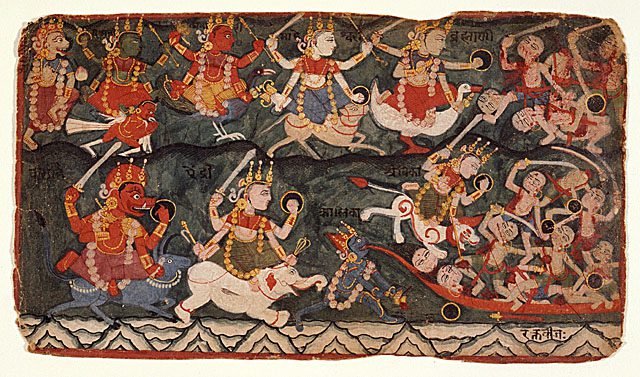
While there are several mythological stories that are included in the Purana, be it the creation of universe or mentions of Mahabharata, it is difficult to ignore the significance that the Devi Mahatmya holds in this text. This part consisted of stories that very intriguingly give way to full and grandiose display of the power and fierceness of shakti.
Devi Mahatmya
The Devi Mahatmya, literally means glorification or praises of the Goddess. It is a highly regarded literature in the context of Shaktism, a branch of Hinduism that honours Shakti, the divine feminine spirit. It is also referred to as the Durga Saptashati or Chandi Path. it is spread over 13 chapters in the Markandeya Purana and takes place from chapter 81 to 93.
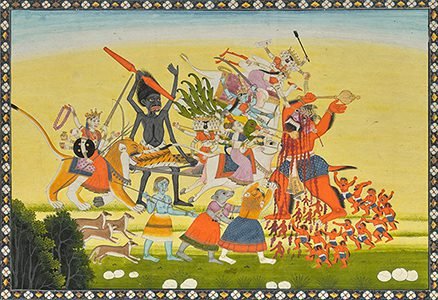
Story of Mahishasura
Mahishasura was the son of a mountain goddess and a buffalo demon. To appease the creator Brahma, Mahishasura practiced severe penance. Brahma was pleased with his devotion and granted him the boon that neither humans nor gods could kill him and he believed this would make him invincible. In response to Mahishasura’s growing threat, the gods were unable to oppose him due to his boon. Goddess Durga emerged from the union of their energies. Mahishasura tried to defeat Durga by using his power to transform into a tiger, lion, buffalo, and other animals. But finally, Goddess Durga defeated him
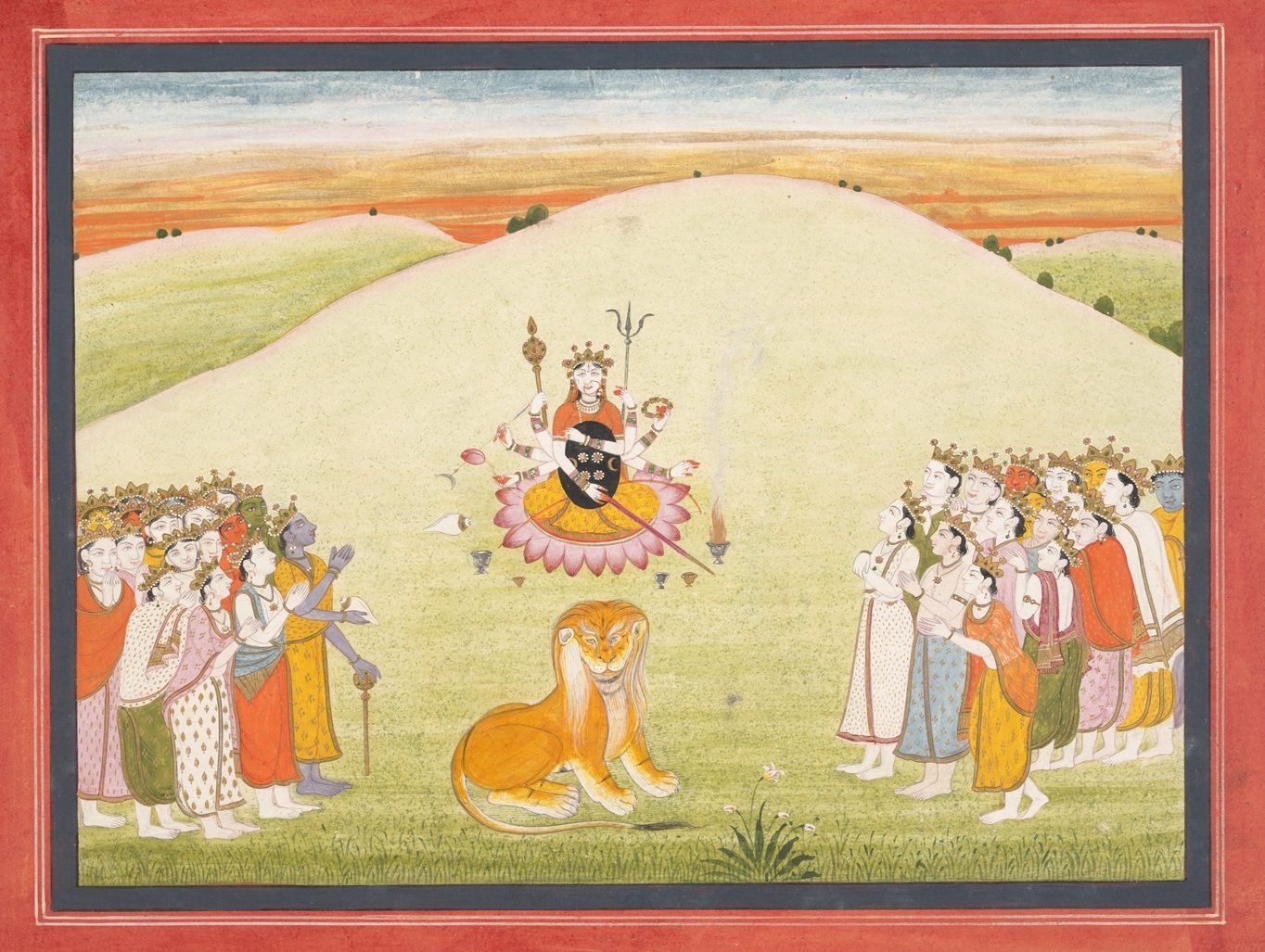
Story of Raktabija
Raktabija was a formidable demon from Hindu mythology. His name translates to “blood-seed,” a reference to his unique boon from Lord Brahma: whenever a drop of his blood fell to the ground, it would instantly create another Raktabija, making him virtually invincible in battle.
As Raktabija terrorized the heavens and defeated the gods, they sought the help of Goddess Durga, who emerged from the collective energies of the deities. She created a swarm of bloodthirsty goddesses known as the Matrikas who assisted her in battle. As Durga fought Raktabija, every time he bled, the Matrikas would quickly consume his blood, preventing new demons from emerging. Durga ultimately defeated Raktabija, severing his head and putting an end to his tyranny.

The Seven Mothers or the Saptamatrika
The demons Shumbha and Nishumbha had conquered the sky and the gods went to the Himalayas to pray to Devi. Devi fought with Sumbha and Nisumbha’s servants Chanda and Munda. Chanda and Munda were eventually killed by Kali emerging from Devi’s forehead. The war continued and the Seven Mothers or saptamatrikas were born from the seven male gods. The Matrikas appeared as Shaktis from the bodies of the gods Brahma, Shiva, Skanda, Vishnu and Indra Shaktis, in their forms they approached Chandika (Devi) with the forms, ornaments and vehicles of God. They then killed the demon army in this form. Therefore, Matrikas is said to be the goddess of war. They are described as the attendants of Durga.

Worship
In India, the recitation of Devi Mahatmya is done during Sharad Navaratri (October-November). This takes place very religiously during the Navratri festival in India, during Durga Puja and specifically in Durga temples. The most important thing is said to be the recitation of the middle part of Devi Mahatmya. If a community or individual cannot recite the entire Devi Mahatmya, then only the middle part is recited during pujas or festivals.
It is mentioned in the Purana that a special significance must be placed on knowing and listening to recitations too. A devotee must listen to the goddess’s tales during all the religious ceremonies like making sacrifice, worship and performing Yagya. A man who remembers her when faced with a dangerous situation remains protected by her. Other than this the duties of grihastha (householder) and the dos and don’ts of it are also found within the text.

Legacy
The Markandeya Purana has left a deep and lasting legacy within Hindu tradition. Its elevation of goddess worship, moral teachings, and philosophical insights have shaped the religious landscape for centuries. Devi Mahatmya in particular has had a profound impact on goddess worship and bhakti in many aspects of the Hindu culture, leading to the establishment of many temples and festivals dedicated to her. The text of Markandeya Purana serves as a collection that combines mythological stories with forms of worship that motivates and inspires the devotees, making it a valuable resource for scholars and practitioners to understand the Hindu religion.
The Markandeya Purana also provides important teachings on Dharma, particularly through the narrative of King Harishchandra and other moral stories. Harishchandra’s unwavering devotion to truth despite great hardships became a guiding principle for generations. His story is exemplified for emphasizing the importance of self-sacrifice and heroism.

Conclusion
In conclusion, the Markandeya Purana stands as a significant text within Hinduism, encompassing the power of mythology, worship practices, and spiritual teachings. The text contains many stories, from the famous tale of King Harishchandra and Goddess Durga to cosmic descriptions of creation and destruction. Each story contains a profound lesson that touches on human experience and teaches the virtues of truth, honesty, and perseverance in the face of adversity. With its sophisticated tapestry of tales and lessons, the Markandeya Purana is still regarded as a priceless piece of Hindu culture that encourages a deep connection with the divine and a dedication to ethical behaviour.

